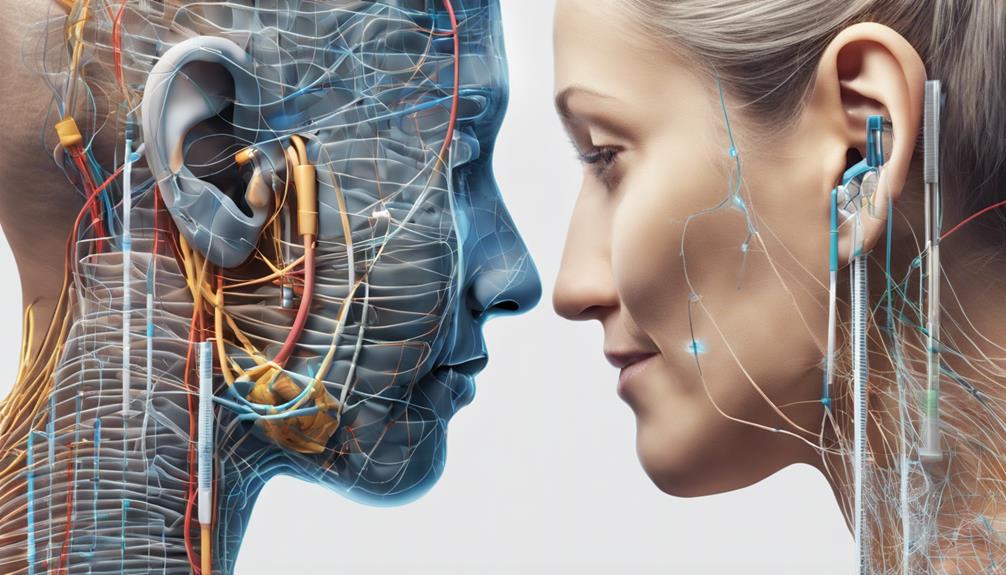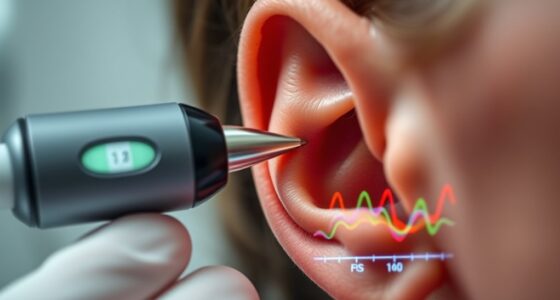Let’s delve into the complex specifics of the ICD code for bilateral sensorineural hearing loss.
Have you ever wondered how this specific code can impact healthcare practices and patient care?
Understanding the nuances of coding for such conditions goes beyond mere numbers and letters on a chart.
It plays a pivotal role in streamlining diagnoses, treatments, and overall healthcare management.
Join us as we uncover the significance of accurate coding in the realm of sensorineural hearing loss and its implications for healthcare professionals and patients alike.
Key Takeaways
- Bilateral sensorineural hearing loss involves inner ear or nerve damage.
- ICD-10 code H90.3 categorizes and manages bilateral sensorineural cases.
- Accurate diagnosis requires audiometric tests and speech discrimination evaluation.
- Meticulous documentation and collaboration ensure coding precision and patient care.
Understanding Bilateral Sensorineural Hearing Loss
When considering bilateral sensorineural hearing loss, it's crucial to understand the intricate mechanisms involved in auditory perception and the implications of damage to the inner ear or auditory nerve. Sensorineural hearing loss refers to a specific type of hearing impairment that originates in the inner ear or the auditory nerve. This condition can result from various factors such as aging, exposure to loud noise, genetic predisposition, or underlying medical conditions.
In terms of ICD-10-CM coding, bilateral sensorineural hearing loss is classified under code H90.3, which specifically denotes bilateral sensorineural hearing loss. Proper coding is essential for accurate documentation and billing purposes in healthcare settings.
Understanding the nuances of inner ear function and the pathology of the auditory nerve is fundamental in diagnosing and managing bilateral sensorineural hearing loss effectively. By delving into the intricacies of auditory processing and the impact of damage to these vital structures, healthcare providers can offer comprehensive care to individuals experiencing this type of hearing impairment.
Overview of ICD-10 Code H90.3
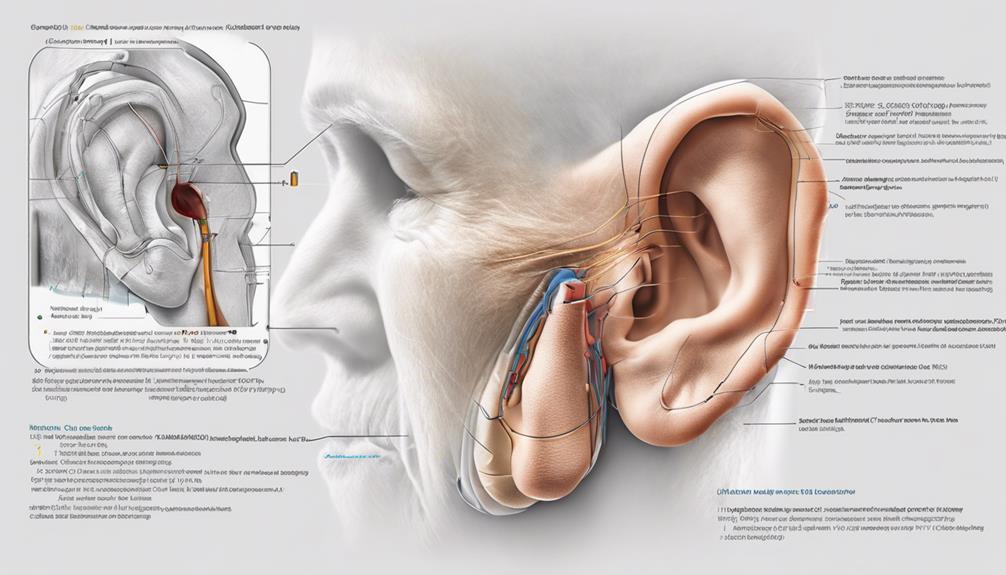
In the context of coding for healthcare documentation, understanding the nuances of ICD-10 Code H90.3 for bilateral sensorineural hearing loss is crucial for accurate diagnosis and treatment. When dealing with ICD-10-CM coding, H90.3 plays a pivotal role in identifying and managing bilateral sensorineural hearing loss cases. Here's a brief overview of this specific code:
- Distinct Classification: ICD-10 Code H90.3 falls under Diseases of the ear and mastoid process in the WHO's medical classification system, highlighting its importance in ear-related diagnoses.
- Exclusion Criteria: It's essential to note that H90.3 excludes certain types of hearing loss like noise-induced and ototoxic hearing loss, emphasizing the specificity of this code.
- Relevance in Medical Billing: Proper utilization of H90.3 is crucial for accurate medical billing processes, ensuring that healthcare providers receive appropriate reimbursement for treating patients with bilateral sensorineural hearing loss. Understanding the intricacies of this code is fundamental for healthcare professionals navigating the complexities of diagnosing and managing such conditions.
Diagnosis Criteria for Bilateral Hearing Loss

To diagnose bilateral sensorineural hearing loss accurately, audiometric tests are conducted to assess the sensitivity of both ears across various frequencies. The criteria for diagnosing bilateral sensorineural hearing loss involve a significant decrease in hearing sensitivity in both ears, typically evident across multiple frequencies on an audiogram. This condition requires thorough evaluation to differentiate it from other types of hearing loss like conductive or unilateral sensorineural hearing loss.
An essential aspect of the diagnostic process includes ruling out these other types to confirm bilateral sensorineural hearing loss. Speech discrimination abilities in both ears are also evaluated to ensure an accurate diagnosis. These diagnostic steps are crucial not only for proper medical treatment but also for correct medical coding, ensuring accurate ICD-10-CM codes are assigned for coding and billing purposes.
Coding Guidelines for Sensorineural Hearing Loss
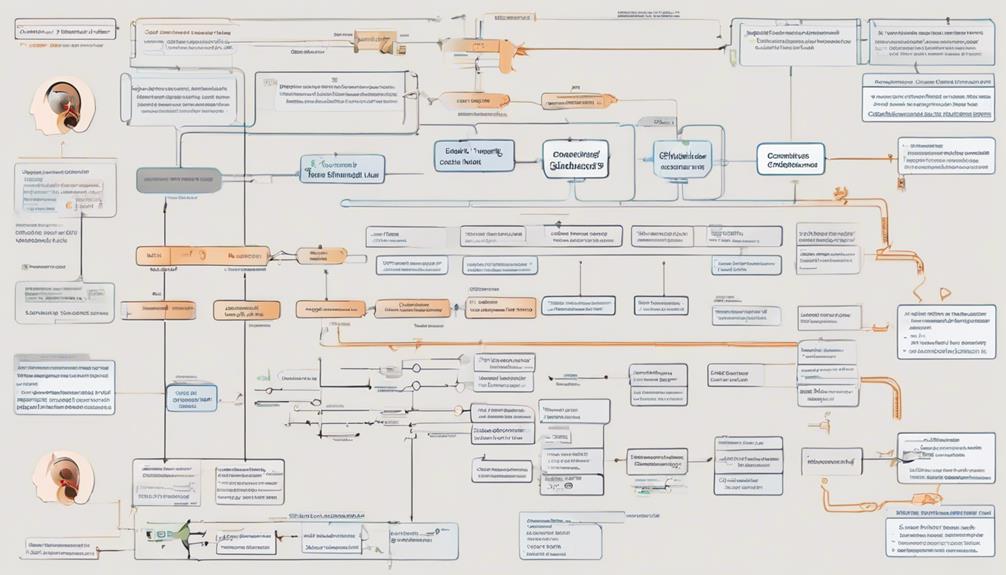
Utilizing accurate ICD-10 coding protocols is crucial for categorizing sensorineural hearing loss with bilateral involvement. When dealing with medical billing and coding, adherence to the specific guidelines for sensorineural hearing loss is imperative. Here are key points to consider:
- ICD-10-CM code H90.3 is used to designate sensorineural hearing loss with bilateral involvement, ensuring proper identification in healthcare records.
- Understanding the nuances of coding for sensorineural hearing loss aids in precise documentation, leading to improved accuracy in medical records and billing processes.
- Compliance with coding guidelines not only facilitates correct classification but also impacts the efficiency of healthcare claims management, potentially affecting reimbursement outcomes.
Accurate coding of sensorineural hearing loss is fundamental for healthcare providers, as it directly influences the quality of patient care, billing accuracy, and overall operational efficiency. By following established protocols and guidelines, healthcare professionals can streamline processes and enhance the delivery of services related to hearing impairments.
Tips for Accurate Coding and Documentation
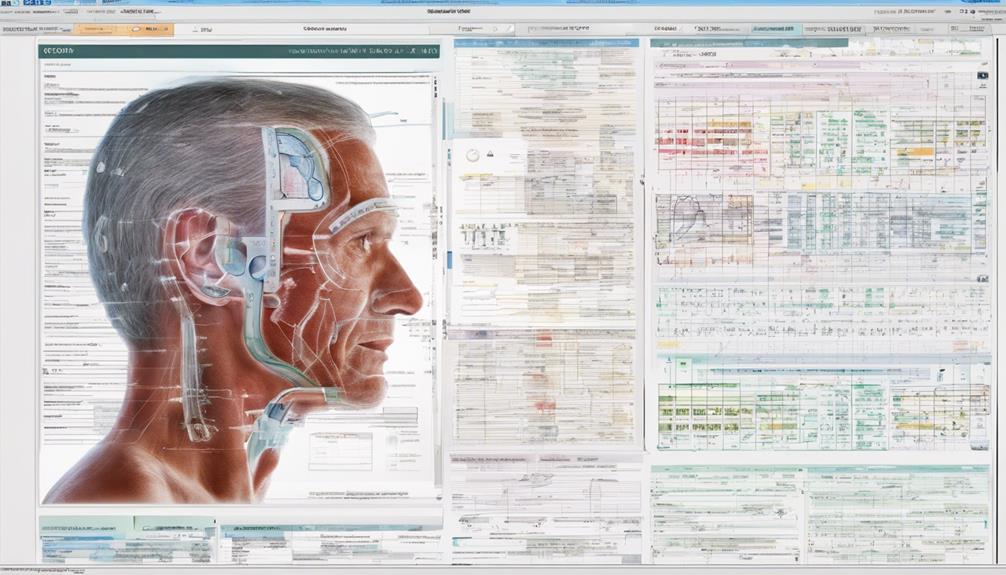
Let's ensure accurate coding and documentation for bilateral sensorineural hearing loss by meticulously documenting the diagnosis with relevant medical evidence.
When coding for mixed hearing loss, it's crucial to verify if the impairment is both sensorineural and bilateral before assigning ICD code H90.3.
The National Institutes of Health recommends collaborating with healthcare providers to gather comprehensive information for precise coding.
Understanding the coding guidelines and exclusions related to H90.3 is essential to avoid errors.
Documenting the diagnosis clearly with supporting medical evidence not only justifies the use of the specific ICD code but also ensures accurate reimbursement and quality patient care.
Frequently Asked Questions
What Is the ICD-10 Code for Sensorineural Hearing Loss Bilaterally?
The ICD-10 code for sensorineural hearing loss bilaterally is H90.3. This code signifies a confirmed diagnosis of sensorineural hearing loss affecting both ears specifically. It excludes other types of hearing loss like conductive or unilateral sensorineural.
Healthcare providers rely on this code for precise documentation and billing purposes. Various causes can lead to bilateral sensorineural hearing loss, requiring diverse treatment strategies for management.
What Is the ICD-10 Code for Distorted Hearing?
Distorted hearing is represented by the ICD-10 code H90.3, indicating bilateral sensorineural hearing loss. This condition impacts both ears, involving inner ear or auditory nerve damage. Typically permanent, causes include aging, loud noise exposure, and medical conditions.
Proper documentation and coding are crucial for accurate diagnosis, treatment, and reimbursement. Interventions like hearing aids or cochlear implants can benefit those with distorted hearing.
What Is the 2023 ICD-10 Code for Sensorineural Hearing Loss?
We know the 2023 ICD-10 code for sensorineural hearing loss is H90.3. This code is crucial for accurately documenting cases of sensorineural hearing loss affecting both ears.
Healthcare providers rely on this code for proper tracking and billing purposes. Using the correct ICD-10 code is essential for effective communication and ensuring appropriate reimbursement in healthcare settings.
Understanding this code simplifies medical coding processes and facilitates accurate record-keeping.
What Is the ICD Code for Sensorineural Hearing Loss Unspecified?
We got you covered!
The ICD code for sensorineural hearing loss unspecified, H90.3, signifies a bilateral permanent hearing impairment affecting both ears.
This specific code aids healthcare providers in accurately diagnosing and billing for cases of sensorineural hearing loss.
Understanding and utilizing this code is essential for managing and documenting such conditions effectively.
It's like having a key that unlocks the door to better healthcare services for individuals experiencing this type of hearing loss.
Conclusion
In conclusion, the ICD-10 code H90.3 for bilateral sensorineural hearing loss is crucial for accurate diagnosis and treatment. Research shows that approximately 15% of adults over 18 in the United States report some trouble hearing. Proper understanding and utilization of this code can improve healthcare outcomes for individuals with this condition.
Remember to consult healthcare professionals for guidance on managing sensorineural hearing loss effectively.

